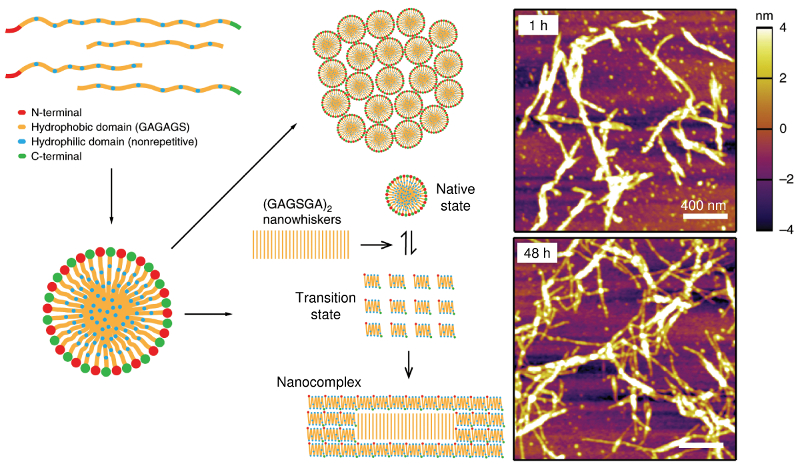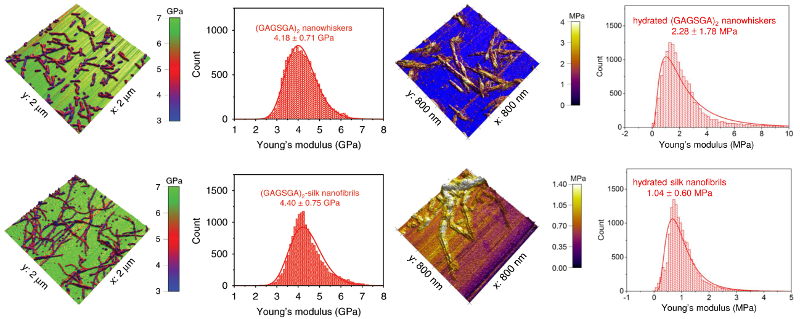AFM Systems
AFM Accessories
Learning
Contact Us
 Part of the Oxford Instruments Group
Part of the Oxford Instruments Group
Centimeter-scale hierarchical materials were nanofabricated from silk proteins using peptide supramolecular assemblies as templates. AFM characterization of nanoscale structure and mechanical properties revealed how changes in process variables affected the resulting material.

Natural materials like wood and bone have unique mechanical and functional properties due to their hierarchy of structural organization on multiple length scales. Synthetic materials that mimic these properties would create many new opportunities in bio- and nanotechnology. However, large-scale fabrication of hierarchical materials remains challenging.
Researchers at the Massachusetts Institute of Technology demonstrated a process for producing macroscale hierarchical materials from silk fibroin proteins. They used (GAGSGA)2 peptide nanowhisker seeds as templates to guide assembly of the fibroin into nanofibrillar structures. Varying the type of peptide seed yielded different silk polymorphs.
AFM images of nanoscale elastic modulus and structure were used to characterize the peptide seeds, the resultant silk nanofibrils, and the effect of varying process variables such as silk fibroin molecular weight or pH and relative concentration of peptide seeds.
The synthesis route demonstrated in this work may enable large-scale manufacture of hierarchical materials with fine-tuned properties. A few of the many potential applications for such materials include underwater adhesives, enhanced sensors to detect food spoilage, and water purification and filtration membranes.

Cypher S with AM-FM Viscoelastic Mapping Mode and Fast Force Mapping Mode options
Nanoscale mechanical properties and morphology were characterized using a Cypher S AFM. Asylum Research’s exclusive AM-FM Viscoelastic Mapping Mode was used to map the topography, elastic modulus, and indentation depth of samples in air. AM-FM mode is a bimodal AFM method that allows rapid, gentle mapping of elastic and viscoelastic properties. Elastic modulus maps were also acquired on samples in water using Fast Force Mapping Mode, which dramatically reduces the time needed to acquire force curve arrays. For both modes, use of the automated GetReal procedure for cantilever calibration simplified the quantitative measurement process.
Citation: H. Sun and B. Marelli, Polypeptide templating for designer hierarchical materials. Nat. Commun. 11, 351 (2020). https://doi.org/10.1038/s41467-019-14257-0
Note: The original article featured above was published as Open Access under a Creative Commons license. The data shown here are reused under fair use of the original article, which can be accessed through the article link above.
